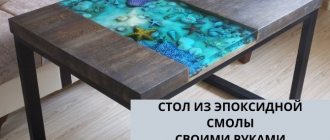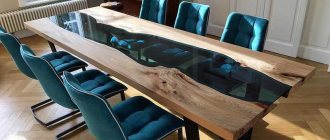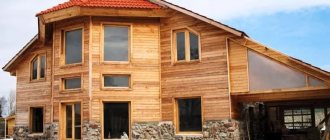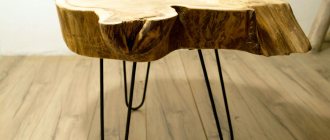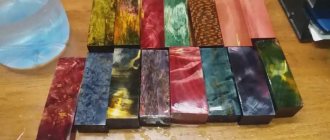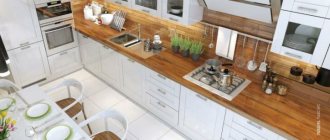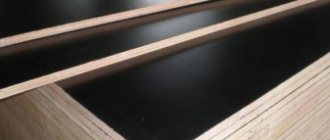Any table made of epoxy resin looks very unusual. The use of it and natural wood allows you to create unique interior items with your own hands, which favorably emphasize the style of modern design trends. The article will describe in detail the algorithm for manufacturing products that can turn into objects of art.
A table made of wood and epoxy resin looks unusual Source avatars.mds.yandex.net
Technical properties of the material
Epoxy resins are a chemical composition based on oligomers that can, upon contact with hardeners (polymerizing components), transform into especially strong polymers. By changing different percentages of the two components, it is possible to create materials with different technical characteristics.
More hardener - the resins are hard. Less, the resin will be liquid. Mix both components in equal quantities, the material will become rubber-like in consistency. An excess of hardener, as well as a lack of it, helps reduce the resistance of the finished product to water and sunlight. Its strength also decreases.
Epoxy resin and hardener Source d.allegroimg.com
Experienced craftsmen have long ago developed the ideal ratio of the initial components: 1x1 or 1x2. When manufactured in this way, the synthetic composition gives minimal shrinkage, which has a positive effect on the final result.
Compared to standard structures made of wood, products made of epoxy resin have special advantages. They:
- waterproof;
- are not subject to abrasive effects;
- have a non-standard, unique appearance.
Using the material, you can experiment endlessly and create completely different products each time, not similar to each other. Exclusivity is the main feature that any table with epoxy resin has. Unlimited possibilities for implementing design solutions are also supported by the fact that during the manufacturing process you can use not only natural wood, but also add paints with a phosphorescent effect, use rubber, and corks left over from wine bottles.
Each table made of resin and wood is an exclusive piece of furniture Source i.pinimg.com
Each countertop made of epoxy resin will be exclusive, but making it yourself will not be cheap. This is the only drawback of products of this kind. It takes several tens of liters of resin to make one table. And only an experienced master knows where and how you can save a little.
Properties of epoxy resin
Epoxy resin is a synthetic oligomer material. It is not used in its pure form. To obtain a solid fragment, the resin must be polymerized using a hardener. Different proportions of components make it possible to create materials with different physical and mechanical properties. The resin has the following qualities:
- strength and resistance to chemicals;
- no unpleasant odor when working with epoxy;
- the polymerization process occurs at temperatures from -15 to + 80 degrees;
- slight shrinkage after hardening of the material, its stable structure;
- poor moisture permeability;
- high resistance to mechanical damage and abrasive wear;
- no need for expensive care.
When using additional protective components, such a table becomes immune to direct sunlight.
The resin also has some disadvantages: when exposed to high temperatures, it can release harmful substances. To work with the substance, you must have certain skills and fully comply with the application technology. Such material has a high cost.
Durable and chemical resistant
No unpleasant odor when working with epoxy
Minor shrinkage after hardening of the material
Weak moisture permeability
High resistance to mechanical damage and abrasive wear
No need for expensive maintenance
Manufacturing technology
Making your own table from epoxy resin and wood is not difficult if you have the skills of a carpenter. The manufacturing algorithm is extremely simple. It begins with the preparation of a wooden blank.
- It is necessary to select wood with a thickness of at least 2-3 cm and sand its surface with sandpaper. The smaller the grain size, the better the surface of the wood will be closed for resin to seep through. In this way, it will be possible to reduce the consumption of the second material and preserve the natural grain of the wood. When using high-grit sandpaper (60-80), the tone of the base will be darker and the resin consumption will increase.
Polishing the countertop before applying resin Source stroy-podskazka.ru
- Then the piece of wood needs to be blown with a stream of compressed air (when you don’t have special equipment at hand, you can replace it with a soft brush). The procedure allows you to remove dust and sawdust after sanding.
- After preparation, it is important to let the wood dry thoroughly. To do this, craftsmen place it in the sun for 48 hours (in winter, it is better to place the workpiece next to a heating radiator).
Now everything is ready to create the product itself. Next we proceed as follows. We are preparing a wooden frame for the tabletop. It will serve as support and protection for the top of the new table. We knock it together from available materials: there is no need to try too hard; after the process of filling the wood with resin is completed, it will be removed and disassembled.
Frame for pouring epoxy resin Source ru-smola.com
See also: Catalog of projects of houses with a porch
Place the frame on a flat base. Next, we take a plastic film, place it inside the knocked down frame, cover the sides of the support with it (the resin does not stick to the film, so its remains can be easily removed after it has completely hardened). It is important at this stage to make sure that the film is not damaged, there are no tears or creases.
The next stage is to place a wooden blank inside the frame and arrange it the way you like best. Mix a small amount of resin with hardener in the required proportions, prepare a small amount of fill (about 300 grams). This will be enough to lubricate the tree on all sides.
First, you need to put rubber gloves on your hands, and then completely saturate all parts of the wood, all its protrusions, seals, and potholes with the prepared solution. This is necessary so that later, when the workpiece is immersed in the resin, air bubbles do not form. The treated elements are left inside the frame for eight hours. This time is enough for the impregnation layer to completely harden.
Pouring a countertop with resin Source remont-book.com
At its confluence, epoxy resin is prepared to fill the base layer. For this, take a large container. It mixes the base material and hardener in the required proportions. Afterwards the mixture is left for fifteen minutes. During this time, it will “rest” and become completely ready for further use.
The finished resin is poured evenly into the frame. It is distributed by gravity inside the mold in an even layer. If after this there are air bubbles left in the filling structure, they can be removed by heating it with a hairdryer. When exposed to heat, the bubbles burst easily. After 24 hours, the frame can be removed from the table. Within another seven days, the material gains its strength. After this, the product can be used for its intended purpose.
Note! Polyethylene film is not able to provide effective tension, so after its removal, defects in the form of unevenness, sagging or folds often remain on the surface of a new tabletop. You shouldn't get upset about this. At the final stage, you can level everything using a grinder or sandpaper. After treatment, the surface loses its transparency, but it can be easily restored by applying a thin layer of resin with a brush.
The finished product looks great Source cdn.materialdistrict.com
See also: Catalog of companies that specialize in the design and construction of small architectural forms
To prevent such defects in production, special forms made of plexiglass are used. They are sold in specialized stores and are not cheap, but their use can significantly reduce the complexity of the manufacturing process, and furniture made from epoxy resin is of higher quality.
Resin for countertops: how to choose?
There are certain requirements for resin for furniture:
- good fluidity and low viscosity for an even coating and good adhesion to other materials (thicker compositions are recommended for jewelry);
- high transparency.
For countertops you can purchase the following products:
"Art-Eco"
Resin is also used for layering. The composition already includes a coloring pigment, the color palette is quite wide. The disadvantage of the product is possible yellowing during use.
EpoxyMaster
Epoxy is suitable for forming a layer up to 5 cm. The product has good fluidity and forms a smooth, even surface.
QTP-1130
The composition is designed for layer-by-layer pouring, which is ideal for a beginner. The maximum thickness of the product should not exceed 3 cm.
CHS Epoxy 520
It is used for making decor on wooden or metal tabletops, as well as for restoring wooden furniture.
Often craftsmen try to save on materials by buying budget brands of epoxy. But the savings are not justified. As a rule, cheap compounds turn yellow after drying, and the surface is not always perfectly smooth.
Material selection rules
The service life of the finished product depends on the quality of the materials used. Creating a finished masterpiece is serious, painstaking and costly work. It will be a shame if in a couple of weeks it becomes covered with scratches or quickly becomes cloudy. Experts do not advise saving money and purchasing products from trusted brands (“Bottega Maestra” or “EpoximaxX Decor”).
Their epoxy resin for countertop pouring works best. It is sold complete with a hardener, in a convenient plastic package weighing 8 kg. After preparation, such resins have a crystal clear color that does not fade when exposed to sunlight.
Epoxy resin “EpoximaxX Decor” Source dekoriko.ru
How to make a table?
To make money by making unusual tables, it is worth understanding what the technology of their production consists of. To make a table from wood and epoxy resin you will need a base.
The manufacturing process includes the following steps:
- You can use a piece of wood or plywood as a base. In the latter case, the product can be given any shape. The future tabletop can be round or oval.
- To ensure that the fill remains on the surface, sides should be attached to the base. They may be plastic.
- The base must be dry and clean. Then you need to lay out the design blanks on the surface.
- Then the table is filled with epoxy resin. If the thickness of the countertop is no more than 0.5 cm, then the liquid mass is poured immediately.
- If the thickness is greater, then filling is carried out in several stages.
- After pouring the first layer, you need to wait two days. Then the procedure is repeated.
If bubbles appear during the process, they are dispersed with a hot hairdryer. To avoid bubbles, each workpiece must be treated with resin. After the layers have hardened, the sides must be removed and the edges and surface sanded.
Epoxy resin can be used to renew old furniture. To do this, you need to clean the surface, remove the varnish, apply a layer of paint, and then fill it with resin. The complete polymerization process takes a week.
You can do a partial fill. Flaws in wood can be natural, that is, the surface is corroded by bark beetles and fungus. They can also be made artificially. When pouring the mixture, the holes on the back side can be sealed with mounting tape so that the resin does not leak out.
Options for combining resin and wood
In fact, the flight of fancy when choosing the design of a future countertop is unlimited. Today, two options for making products from resin and wood are very popular.
Some people prefer to cover the base with epoxy resin. You can add dyes to it and create very original surfaces. In this option, the resin will act as a coating that can reliably protect the tree from moisture. The method is often used to restore old products. If you introduce drops of water into the finished resin composition, they will not dissolve in it and will not disappear anywhere. After the resin hardens, drops of water will remain inside its texture and form an effect similar to a cosmic nebula or milky stains.
Table, resin, wood Source voyagechicago.com
Preparing for work
The room must be well ventilated or have forced ventilation. The indoor air temperature should not be lower than 22 °C. High humidity and dust can ruin your work!!!
It is necessary to prepare materials for the manufacture of formwork. The formwork or form can be assembled from plywood, plexiglass (without scratches or chips) or polished aluminum sheets. You will also need release agents such as wax or semi-permanent release agents. For “home” use, wax is better. And if you are planning a series of countertops, then semi-permanent separators are better, they allow you to make more than 20 removals without rebuilding the separating layer.
Some home craftsmen use ordinary cosmetic Vaseline as a separator. It is easy to purchase, but it is difficult to perfectly align on the mold/formwork and it will cause clouding in places where it comes into contact with the resin. This layer will then need to be sanded.
Accordingly, you need to prepare tools for grinding, or at least a set of abrasive paper of different grain sizes for manual sanding.
Add a description
Don’t forget to prepare personal protective equipment for your loved one) These are gloves, a respirator, and safety glasses. A disposable painting overall and a cap will not be superfluous, because in its liquid state the resin seems to attract any speck of dust, lint, hair...)
Cover the floor and other horizontal surfaces in the area affected by the resin with polyethylene to keep them clean.
You will also need containers for measuring and mixing ingredients. Scales, accurate to 1 g. Or measuring cups, because Some resins are mixed by volume, and some are mixed only by weight, like EpoxyMaster.
Add a description
Features of care
The finished product will last much longer if it is periodically wiped with a soft cloth to remove dust and dirt. It is forbidden to rub the surface of hardened epoxy resin with alcohol solutions and acetone. Do not allow hairspray to splash on it.
Final polishing of the product Source alexia.by
Features of using saw cuts in interior design
Raw materials are actively used in surface decoration. The scope of its application is incredibly wide. A large assortment, flat shape and variability of sizes make it popular in facing work.
Products made from saw cuts are used as a stylish interior accessory or as finishing materials.
Table 1. Design options
| Name | Description |
| Popular design technique. It is the outer cladding of walls or a house. A good alternative to tiles or wallpaper. |
| Modular floor covering. Difficult technology to implement. To avoid the formation of voids, thick cut circles are chosen for laying out. Due to the increased operational load, only hard tree species are used. |
| Decoration of interior items. Range of application: chests of drawers, headboards, mirrors, hangers, door frames or tabletops. |
Advantages
In furniture made of epoxy and wood, not only the appearance attracts attention; the positive qualities of the resin are also transmitted to objects made from it, these are:
- Wear resistance. Epoxy resin perfectly tolerates various unfavorable factors: humidity, high temperatures, mechanical stress, etc. Such coatings do not wear out during long-term use.
- Durability. Thanks to this quality, the material significantly increases the service life of furniture.
- Reliability. Resin is very similar to glass, which is often used to create interior items, but it does not break, does not form dangerous chips, and also weighs half as much.
In addition, when epoxy hardens, it is a very plastic material that can be given any shape. It is quite easy to process. The resin adheres well to different surfaces, forming very strong connections. These features of the material attract not only craftsmen, but also amateurs.
